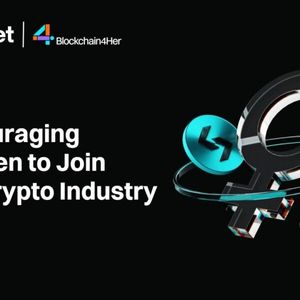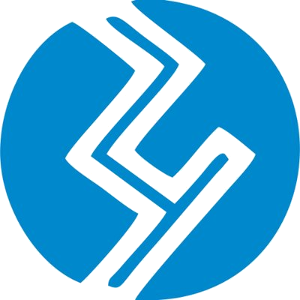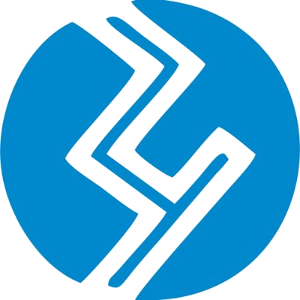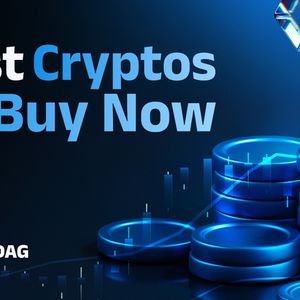Monad Foundation’s Strategic Acquisition: Powering the Future of Stablecoin Infrastructure
5 min read
In the fast-evolving world of Web3, strategic moves often signal significant shifts in direction and capability. One such pivotal development has recently captured the attention of the cryptocurrency community: the Monad Foundation ‘s acquisition of Portal. This isn’t just another corporate takeover; it’s a bold statement about the future of digital finance, particularly the backbone of decentralized applications – stablecoins. The Game-Changing Monad Foundation Acquisition: What You Need to Know The news, initially reported by Blockworks, confirms that the Monad Foundation has officially acquired Portal, a key player in the stablecoin infrastructure space. While the financial terms of the deal remain undisclosed, the intent is clear: to combine Monad’s groundbreaking technology with Portal’s specialized services to create a more robust and efficient stablecoin ecosystem. Both teams are committed to collaborating on critical projects, including advanced bridging solutions and next-generation stablecoin wallets. Monad, known for its high-performance, EVM-compatible blockchain, brings unparalleled speed and scalability to the table. Its innovative parallel execution environment allows for significantly higher transaction throughput and lower latency compared to many existing blockchains. Portal, on the other hand, has built a reputation as a crucial infrastructure provider, focusing on the underlying layers that enable stablecoins to function seamlessly across various platforms. Why is the Portal Acquisition So Significant for Stablecoins? Stablecoins are the lifeblood of the decentralized finance (DeFi) world, acting as a crucial bridge between traditional fiat currencies and the volatile crypto markets. They facilitate trading, lending, borrowing, and payments, providing stability in an otherwise dynamic environment. However, the existing stablecoin landscape faces several challenges: Scalability Issues: High transaction volumes can lead to network congestion and slow processing times. High Transaction Costs: Fees can be prohibitive, especially for smaller transactions. Interoperability Gaps: Moving stablecoins between different blockchains often requires complex and sometimes risky bridges. User Experience: The underlying technical complexities can deter mainstream adoption. This Portal acquisition directly addresses these pain points. Portal’s expertise in stablecoin infrastructure, which includes everything from minting and redemption mechanisms to cross-chain transfer protocols, is now supercharged by Monad’s foundational technology. Imagine stablecoin transactions that are not only lightning-fast but also incredibly cheap, making micro-transactions and everyday use cases far more viable. This synergy promises to unlock new possibilities for how stablecoins are used globally. Enhancing Stablecoin Infrastructure: What Does This Mean for You? The core of this acquisition lies in its potential to dramatically enhance stablecoin infrastructure . But what does that truly entail, and how will it impact users, developers, and the broader crypto market? For users, this could mean: Faster and Cheaper Transactions: Sending and receiving stablecoins will be quicker and more economical, making them more practical for daily use. Seamless Cross-Chain Movement: Improved bridges will allow stablecoins to flow effortlessly between different blockchain networks, opening up more opportunities for DeFi participation and broader utility. More Reliable Services: A more robust infrastructure means fewer disruptions and a smoother experience for stablecoin holders. For developers, the combined power offers: Powerful Tools: Access to Monad’s high-throughput EVM combined with Portal’s specialized stablecoin tooling will enable the creation of more sophisticated and efficient decentralized applications. New Use Cases: The enhanced infrastructure can support novel applications requiring high transaction volumes and low latency, from advanced DeFi protocols to real-world asset (RWA) tokenization. Ultimately, the goal is to build a more resilient, scalable, and user-friendly foundation for stablecoins, positioning them for even wider adoption in the global financial landscape. Driving Web3 Innovation Through Collaboration The collaboration between Monad and Portal is a prime example of how strategic partnerships can drive significant Web3 innovation . By integrating Portal’s application-specific expertise with Monad’s foundational blockchain capabilities, the combined entity is poised to accelerate the development of the decentralized internet. Consider the potential: Aspect Monad’s Contribution Portal’s Contribution Synergistic Outcome Performance High TPS, Low Latency EVM Optimized Stablecoin Logic Ultra-fast, scalable stablecoin transactions Interoperability Robust Blockchain Base Advanced Bridging Solutions Seamless cross-chain stablecoin transfers User Experience Efficient Network Processing Intuitive Wallet Integration Simplified stablecoin management for end-users This kind of integrated approach is exactly what Web3 needs to move beyond niche applications and into mainstream adoption. It’s about building the fundamental layers that will support a decentralized future, making it more accessible, efficient, and reliable for everyone. The Broader Impact on Blockchain Technology and Beyond This acquisition is more than just a deal between two companies; it has significant implications for the broader landscape of blockchain technology . It sets a precedent for strategic consolidation within the Web3 space, where specialized infrastructure providers are being integrated into larger, more comprehensive blockchain ecosystems. For the competitive landscape, this move positions Monad as a formidable contender among high-performance Layer 1 blockchains. By directly addressing stablecoin infrastructure, a critical component for DeFi and enterprise adoption, Monad strengthens its value proposition significantly. Other blockchains may now look to similar acquisitions or partnerships to bolster their own stablecoin capabilities. Furthermore, the focus on enhancing stablecoin functionality could accelerate institutional adoption of digital assets. Institutions require high levels of security, efficiency, and regulatory compliance, all of which are bolstered by a robust underlying infrastructure. The Monad-Portal synergy could pave the way for more traditional financial players to comfortably enter the Web3 space, leveraging stablecoins for various financial operations. Conclusion: A New Horizon for Digital Finance The Monad Foundation ‘s acquisition of Portal marks a pivotal moment for the stablecoin ecosystem and the broader Web3 landscape. By combining Monad’s cutting-edge blockchain performance with Portal’s specialized stablecoin infrastructure, the stage is set for a new era of efficiency, scalability, and user-friendliness in digital finance. This strategic move promises to not only enhance existing stablecoin applications but also unlock entirely new possibilities for decentralized finance, payments, and beyond. As the crypto world continues to mature, such integrations are crucial for building the resilient and powerful infrastructure needed to support a truly decentralized future. To learn more about the latest blockchain technology trends, explore our article on key developments shaping Web3 innovation and its future impact on global finance.

Source: Bitcoin World



